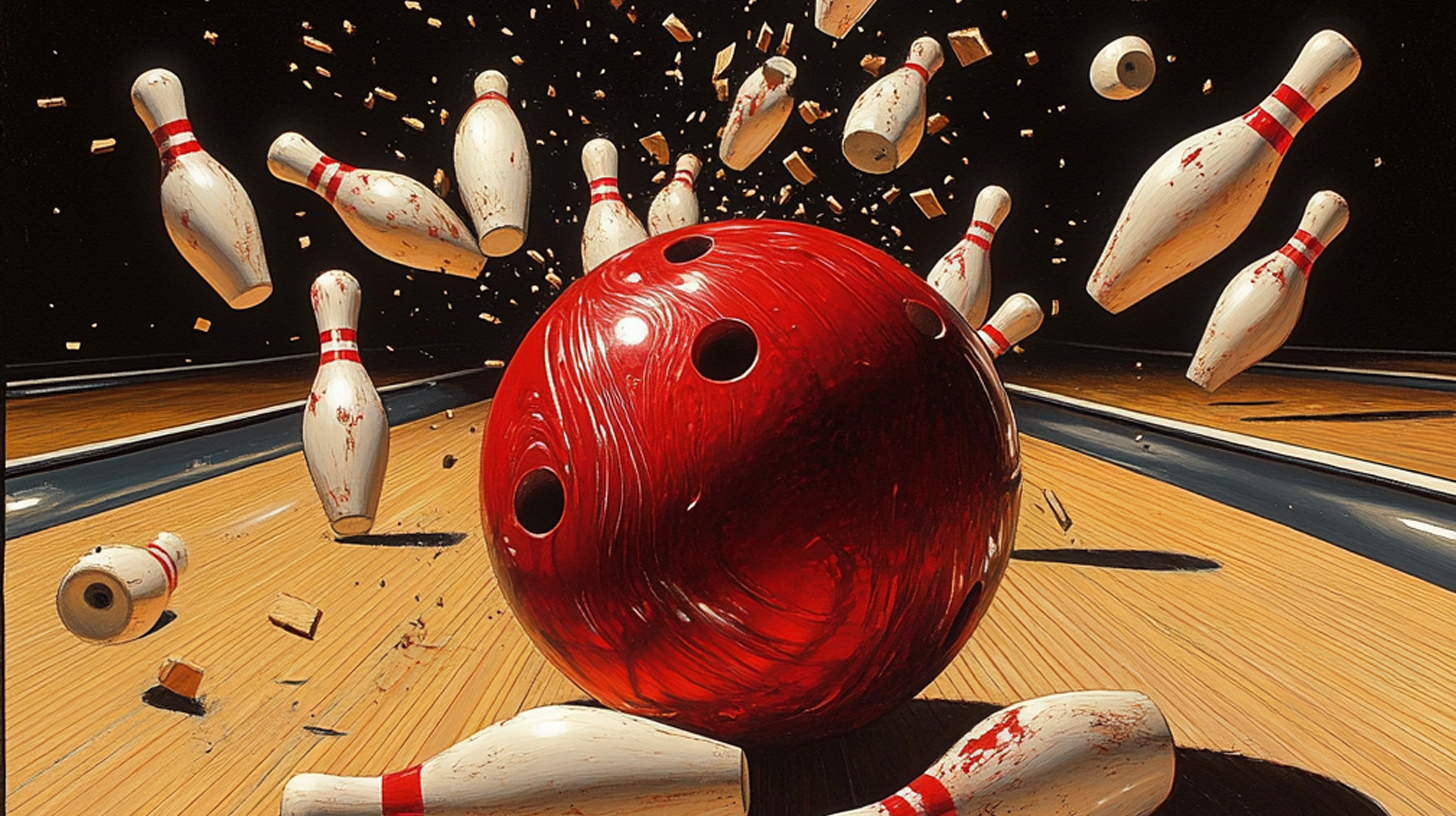Bowling, a sport enjoyed by millions worldwide today, boasts a rich and intriguing history that dates back thousands of years. The origins of bowling can be traced to ancient civilizations, where forms of the game were played with stones and rudimentary pins. Archaeological evidence suggests that the earliest known form of bowling was practiced in Egypt around 3200 BC, where children’s graves contained objects resembling primitive bowling pins and balls.
The history of bowling took a significant turn during the Roman Empire, where soldiers engaged in a similar game using stone objects. Over time, this pastime spread across Europe and evolved into various regional games. By the Middle Ages, lawn bowling gained popularity in England and surrounding countries, laying the groundwork for modern variations.
Fast forward to the 19th century, when indoor sports began to gain traction as societies industrialized and urbanized. It was during this period that organized indoor bowling emerged in Germany with ninepins—a precursor to today’s ten-pin version. As German immigrants brought their love for ninepins to America, adaptations led to what we now recognize as modern ten-pin bowling.
The evolution of indoor sports like bowling reflects broader societal changes: technological advancements allowed for standardized equipment such as wooden lanes and rubber balls; meanwhile, organized leagues fostered community engagement through competitive play. Today’s automated scoring systems and synthetic lanes are just some examples of how technology continues to shape the sport.
Understanding the history of bowling not only enriches our appreciation for its enduring appeal but also highlights its role in cultural exchange throughout human history—a testament to how leisure activities evolve alongside civilization itself.
Understanding the Basics: How to Play Bowling
Bowling is a fun and engaging sport that combines skill, precision, and a bit of strategy. Understanding the basics of how to play bowling is essential for anyone looking to enjoy the game or improve their skills. Let’s dive into the fundamental aspects of this popular pastime.
At its core, bowling involves rolling a heavy ball down a lane to knock over ten pins arranged in a triangular formation. The primary objective is to knock down as many pins as possible with each roll, ideally achieving a strike by knocking all ten pins down on the first attempt.
To begin learning how to play bowling, familiarizing yourself with basic bowling techniques is crucial. Start by selecting the right ball; it should be comfortable in weight and have finger holes that fit snugly without being too tight. A proper grip ensures better control and accuracy during your throw.
When it comes to throwing the ball, one of the fundamental techniques is mastering your approach. The standard approach consists of four steps: starting position, push away, swing back, and release. As you move toward the foul line—marked at the end of your approach path—maintain balance and aim for consistency in your steps.
Understanding bowling rules enhances your gameplay experience. Each game consists of ten frames where players get two chances per frame to knock down all ten pins unless they achieve a strike on their first roll. Scoring can seem complex initially but becomes intuitive with practice: strikes earn bonus points from subsequent rolls while spares add points from only one additional roll.
By grasping these basic concepts—bowling rules, techniques like grip and approach—you’ll be well-equipped on your journey to learn how to bowl effectively and enjoyably!
The Health Benefits of Bowling as a Recreational Activity
Bowling is more than just a fun way to spend time with friends or family; it’s also a fantastic recreational activity that offers numerous health benefits. As an indoor sport, bowling provides an excellent opportunity for physical activity regardless of the weather, making it accessible year-round. One of the key advantages of bowling is its nature as a low-impact exercise. This means it’s gentle on the joints while still promoting cardiovascular health and muscle toning.
Engaging in regular bowling sessions can help improve balance and coordination, as players must maintain stability while delivering the ball down the lane. Additionally, it enhances flexibility due to the stretching motions involved in each throw. Beyond physical fitness, bowling is also beneficial for mental well-being. It serves as an effective stress relief through sports by providing a social outlet where individuals can unwind and enjoy themselves.
Whether you’re aiming for strikes or simply enjoying some leisure time at the lanes, incorporating bowling into your routine can significantly contribute to both your physical and mental health.
The Equipment Needed for Bowling and How to Choose the Right Gear
Bowling is a sport that combines skill, precision, and the right equipment to enhance your performance on the lanes. Whether you’re a beginner or looking to refine your game, understanding the essential gear is crucial. This bowling equipment guide will help you navigate through choosing a bowling ball, finding the best shoes for bowling, and identifying other essential gear for beginners.
When it comes to choosing a bowling ball, consider your skill level and playing style. Beginners might benefit from a lighter ball that’s easier to control, while more experienced players may opt for heavier balls that provide better pin action. It’s also important to select a ball with the right grip size; many pro shops offer custom drilling services to ensure a perfect fit.
The best shoes for bowling are those that offer comfort and stability. Look for shoes with non-marking soles and sliding capabilities on one foot—typically the left shoe for right-handed bowlers—to facilitate smooth delivery of the ball. Investing in quality shoes can improve your performance and reduce strain during play.
Other essential gear includes wrist supports to aid in maintaining proper form and consistency, as well as microfiber towels to keep your hands dry and maintain optimal grip on the ball. As you progress in your bowling journey, you may also want to explore accessories such as finger inserts or interchangeable slide soles.
By equipping yourself with the right gear tailored to your needs, you’ll be well-prepared to enjoy this engaging sport while improving both technique and scores over time.
Bowling Etiquette: Do’s and Don’ts on the Lane
Bowling is a fun and engaging activity, but it’s important to remember that proper conduct in bowling alleys ensures an enjoyable experience for everyone. Understanding bowling alley etiquette and lane courtesy rules can make your time on the lanes much more pleasant.
One of the primary rules of lane courtesy is to always be mindful of your surroundings. Before stepping up to bowl, check if the players on adjacent lanes are preparing to roll their balls. It’s customary to allow the bowler on your right to go first if you’re both ready at the same time. This simple gesture helps maintain a smooth flow and prevents any awkward collisions or distractions.
Another key aspect of bowling etiquette involves handling equipment responsibly. Always use rental shoes provided by the alley, as they are designed specifically for safety on slippery lanes. Additionally, avoid using someone else’s ball without permission; each bowler has their preferred weight and finger hole size that suits their style best.
Respecting others’ space is also crucial in maintaining proper conduct in bowling alleys. Keep conversations at a reasonable volume so as not to disturb fellow bowlers focused on their game. Similarly, refrain from celebrating too loudly or excessively when you score well—it’s great to enjoy your success but be considerate of those around you.
Lastly, remember that patience is part of good sportsmanship in any group setting like a bowling alley. Whether waiting for your turn or dealing with occasional delays due to technical issues, maintaining a positive attitude contributes significantly to an enjoyable atmosphere for all participants.
By following these simple do’s and don’ts, you’ll not only enhance your own experience but also contribute positively towards creating an environment where everyone can have fun while respecting one another’s enjoyment of this classic pastime.
The Social Aspect of Bowling: Building Community Through Strikes and Spares
Bowling has long been celebrated not just as a sport, but as a social activity that brings people together. The social benefits of bowling leagues are numerous, providing an excellent opportunity for community building through sports. These leagues foster camaraderie among participants, creating bonds that often extend beyond the lanes. Whether you’re a seasoned bowler or a newcomer to the game, joining a league can introduce you to people with shared interests and goals.
Bowling is also an ideal family-friendly activity indoors, making it accessible year-round regardless of weather conditions. Families can enjoy quality time together while engaging in healthy competition and supporting one another’s progress. This shared experience strengthens family ties and encourages communication in a fun and relaxed environment.
Moreover, bowling alleys serve as community hubs where friendships are formed and memories are made. They offer a welcoming space for individuals of all ages to gather, socialize, and participate in friendly competition. By promoting inclusivity and teamwork, bowling contributes significantly to community cohesion and individual well-being.
Why Bowling Continues to be a Timeless Indoor Sport for All Ages
Bowling remains a timeless indoor sport that has captivated people of all ages for generations. Its enduring popularity can be attributed to several key factors. Firstly, bowling is an inclusive activity that requires minimal prior experience, making it accessible to both beginners and seasoned players alike. The basic mechanics are easy to grasp, yet the game offers enough complexity to challenge even the most skilled participants.
Moreover, bowling alleys provide a social environment where friends and family can gather for fun-filled outings. The sport encourages camaraderie and friendly competition, fostering connections among players. Many alleys also offer additional amenities such as arcades and dining options, enhancing the overall experience.
Another reason for bowling’s lasting appeal is its adaptability to various occasions. Whether it’s a casual weekend outing, a birthday party, or even a corporate event, bowling fits seamlessly into different contexts. This versatility ensures that it remains relevant across diverse social settings.
In conclusion, the combination of accessibility, social interaction opportunities, and adaptability makes bowling an enduring favorite in the realm of indoor sports. As long as people seek engaging activities that bring them together in enjoyable ways, bowling will continue to hold its place as a beloved pastime for all ages.




